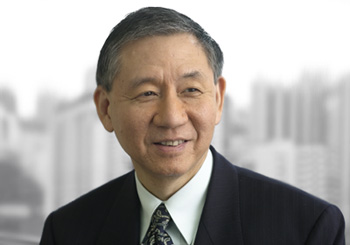The Good Old Days Revisited

At the beginning of the 70s, I had been in practice for only a few years. I had just been made a salaried partner in Allen & Gledhill, which gave me a good pay rise without the responsibilities of full partnership (‘good pay rise’ is of course a relative term: my income as a salaried partner was significantly less than that of a present first year associate in the same firm). My firm was one of the biggest in town (with about a dozen lawyers), yet it was still small enough that I knew the name of every person in the firm (peons included), and partners would lunch with legal assistants on a regular basis.
The legal world was still dominated by the ‘Big 4’ firms which had been founded by expatriates, namely, Donaldson & Burkinshaw, Drew & Napier, Rodyk & Davidson and Allen & Gledhill. However, their dominance was being challenged by two ‘local’ firms, Shook Lin & Bok (which was founded by Malaysians) and Chor Pee & Hin Hiong (which later fell into difficulties with the prosecution and conviction of Khoo Hin Hiong). There were only about 300 practising lawyers at the Bar at the beginning of the decade, so the sense of camaraderie was strong.
Legal practice was relatively leisurely, compared to today’s pace. I thought I was working hard by not going home till after 6pm, and usually had time to go home for a shower before an evening engagement. There was time for an active social life after work despite having to go to the office on Saturday mornings. I even had time to join ‘The Sceneshifters’ (an amateur operatic society) with Woo Tchi Chu and together we formed part of the tenor chorus for operettas like ‘Land of Smiles’ and ‘Rose Marie’.
When we went to the High Court on summons in chambers days, we would walk back to Raffles Place, and have coffee at the G H Café in Battery Road (which is now part of 6 Battery Road) together with its sinfully delicious kaya cake. If we missed coffee, we could always go there for lunch and sit at a table reserved for lawyers (a sort of ‘mess table’). There I lunched with some of the legal giants of the day (such as David Chelliah, K C Chan, Goh Heng Leong, Tan Tee Seng, Tan Wee Kian, Sachi Saurajen and Koh Eng Tian). None of them had any airs and were happy to talk to junior lawyers as equals and share their knowledge and experience with them. Another favourite haunt of lawyers was the Polar Café in High Street, whose curry and cream (custard) puffs were legendary.
When we appeared in the traffic courts against police prosecutors, the magistrates (like Giam Chin Toon) would invite us back into their chambers for coffee after the case was over and we would chat with the magistrate as well as the prosecutor. Relations between bench and bar were much closer then with such regular exchanges, culminating in the Bench and Bar Games against the Malaysians, which really roused the camaraderie of the Singapore lawyers. Our motto when we left for our biennial trips to Malaysia was ‘kalah tidak apa, wang tidak apa, semua tidak apa, style mau’.
Some of the major legal events that happened in the 70s included the following:
•The Law Society was still known as the Advocates and Solicitors Society of Singapore until it became a statutory body known as the Law Society of Singapore on 12 June 1970.
• The Supreme Court of Singapore was established on 9 January 1970 when it formally became independent of the Malaysian Court.
• In 1970 the Revised Edition of the Laws of Singapore was published, replacing the Laws of the Colony of Singapore (1955 Edition).
• The then Prime Minister, Mr Lee Kuan Yew, addressed the Law Society twice in this decade. The first occasion was at our Annual Dinner in 1970, when he criticised the Stock Exchange of Singapore (‘SES’) and urged the Law Society to pay heed to the weaknesses he had identified in the SES. He also defended the abolition of the jury system which had taken place at the end of the previous decade. The second occasion was at our annual dinner in 1977 when he castigated us for not heeding his earlier warning and gave notice of the Government’s intention to:
(a) make voting at Law Society elections compulsory;
(b) appoint a nominee to the Law Society’s council.
Although smoking had not yet been abolished inside air-conditioned buildings at that time, there was an informal ban on smoking when the Prime Minister was in a room, and the ballroom on these two occasions was noticeable for extended bathroom breaks by large sections of the audience, who disappeared into the lobbies outside for a puff or two.
• In 1971, the Attorney-General’s Chambers moved from the present Family Court building in Havelock Road to High Street, next to Parliament House.
• In 1971, Prof Tommy Koh became Dean of the Law Faculty and Prof S Jayakumar became our Head of Mission to the United Nations.
• In 1974, the Singapore Association of Women Lawyers was founded with Farideh Namazie as its first President.
• In 1975, the Board of Legal Education was established by the Legal Profession Act (Cap. 217).
• In 1975, the Subordinate Courts Complex was completed.
• In 1975, the Subordinate Courts Complex was completed.
• In 1979, Phyllis Tan became the first female President of the Law Society and in the same year, TPB Menon became the first local graduate to serve as Vice President.
Lawyers who worked in the Raffles Place area used to visit the office-cum-showroom of the Malayan Law Journal in Raffles Place next to Robinsons to browse through the latest law books. Bashir Mallal was an amazing man, who had no formal legal training but taught himself law to such an extent that he could give legal opinions and was conferred an Honorary LLD by the then University of Singapore. His death in 1972 marked the passing of an era.
Another enduring memory for all lawyers who worked in the Raffles Place area was Robinsons Department Store in Raffles Place (now occupied by OUB Centre) where we would go for lunch or simply window shopping during lunchtime. One day in 1972, I set out for court in the morning and, when I returned, I found that Robinsons had been destroyed by a fire which also killed the kindly liftman who would say hello to me whenever I visited the store. My office (which was next door) had not been damaged by the fire, but suffered damage from the water pumped into the building by firemen anxious to protect it from the flames next door. I found that my carpet had shrunk by several feet owing to the water, and made an unsuccessful claim on our insurance company, which denied liability on the grounds that our fire insurance policy only responded to claims for damage from fire, not water which put out the fire.
My own work experience was being gained incrementally, as I counted many ‘firsts’. My first (and only) murder trial was in 1974 where Amarjeet Singh and I were assigned to defend two robbers who had killed the victim of their crime. Both our clients were convicted and were eventually hanged. My client was most reluctant to appeal against his conviction, and I was only able to persuade him to sign the appeal papers by telling him that his wish to be executed early could not be fulfilled until his co-accused’s appeals had been disposed of. In 1973, I argued my first case in the Court of Appeal which was for a sum of $1,400. Even then, that was not a large sum, and I was fearful of the reception I might receive from the Court of Appeal. To my relief, they heard me out patiently, and gave judgment in my client’s favour which established that the right of a buyer to reject defective goods could be lost after a reasonable time (1972-1974 SLR 189), which I later discussed in an article in 1992 published in the Lloyds Maritime and Commercial Law Quarterly at page 334.
I was also doing a good deal of corporate finance work, as my firm was acting for about a third of the new merchant banks in Singapore, which were at the vanguard of the new kind of corporate work that we were seeing for the first time. IPOs (or flotations, as they were then called) were starting to become popular, and lawyers were beginning to understand the urgency that such work demanded, which would change the pace of legal life (at least in corporate work) forever. I assisted in the first IPO in Singapore of a close-ended investment trust (Harimau), and the first take-over of a publicly listed company under the new Companies Act (Haw Par of M&G).
In the early 1970s the property market was as hot as it is now, and I was fortunate to have a big client from Hong Kong who went on a spending spree in Singapore, buying several large properties and thus underwriting my introduction to conveyancing practice. I also undertook my first experience as a developer’s lawyer for sales of units in an apartment block (Cavenagh House). The market remained on the boil until the Prime Minister announced on 10 September 1973 that only Singaporeans could purchase residential property. Overnight he brought the property market down from its giddy heights (again, this is a relative term: the best apartments were then selling for less than $100 per square foot) and killed the conveyancing market for almost the rest of the decade. I then switched to acting for landlords in granting commercial tenancies (ICB Building and Shing Kwan House) as well as acting for finance companies financing purchases of commercial units (Katong Shopping Centre).
On the extra curricular front, I began my practice of Family Law when I was asked to teach the subject at the University of Singapore as a part-time tutor. This led to my being appointed to a committee to advise the Ministry of Social Affairs on reforms to the Women’s Charter, after which I continued my interest in the subject by actively practising in this area for the rest of my career.
I also committed myself to pro bono activities. With my experience of Family Law, I volunteered for the Panel of Lawyers to assist the Legal Aid Bureau. More interestingly, I also joined the Samaritans of Singapore (‘SOS’) as a consultant, advising their clients who felt suicidal because of legal problems. I served under their first Chair, Margaret Jeyaretnam, wife of Ben and mother of Philip, and a wonderful person in her own right. Eventually, I became Chair of the SOS and served for three terms in that office.
The 70s were therefore a decade when lawyers led a busy (but not too busy) and eventful life and had time for each other. We were certainly a lot poorer than lawyers are now, but (arguably) we enjoyed our lives a little more.
Michael Hwang, SC
AAS NO. 15/1968



